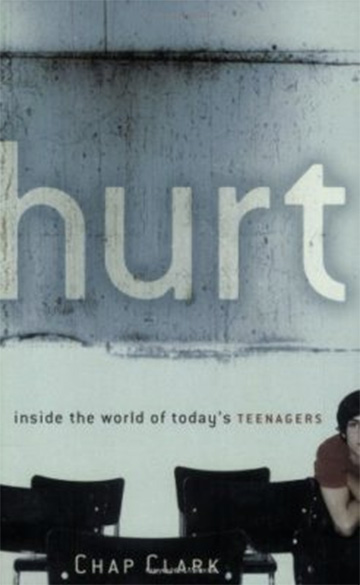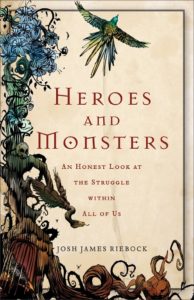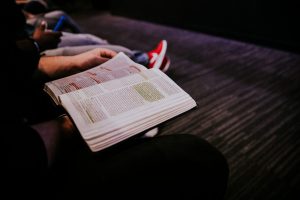
Synopsis
Overall Rating
Final Thoughts
Year Published
Authors
Topics
Synopsis
Final Thoughts
Overall Rating
July is a special month because it gets two Book of the Month posts. (August prolly will as well because I already finished a book for August.) For my second July Book of the Month, I read Hurt. I had to read it my freshman year at Cornerstone for my adolescent development class. It takes a look at the world of teenagers and attempts to explain the things and forces going on in their lives in order to help adults relate better to them. I started it as soon as I finished Love Wins last month, but, since it is a rather academic book, it took me a while to get through it all (but I enjoyed it nonetheless).
For this book, the author, Chap Clark, goes into high schools and goes life-to-life with teenagers. He spends time with them, talks with them, gets them to open up. He found that, overwhelmingly, there was one thing that fueled the adolescents- abandonment. They felt abandoned by their parents, teachers, pastors, coaches. I can attest to this both from personal experience and from working with youth today (both in a church and at McDonald’s).
In the book, Clark shows how this feeling of abandonment fuels almost everything they do. Adolescents have come to distrust adults because they feel the motives of the adults are purely selfish. Adolescents feel as if the adults are not there to them. This causes them to push the adults away, and focus on themselves and their friends. They have created what Clark calls the “world beneath” where they have their own rules, norms, expectations. It’s a mini-society living underneath the surface of American society. They look out for each other because they think nobody else is.
Ultimately, though, it seems, that everything an adolescent does is for their own safety. They are looking out for themselves since they believe nobody else is. Their friends may be to an extent, but ultimately, each one looks out for themselves ahead of others. They cheat on tests because they need to get good grades in order to look good; they go to parties and drink and smoke in order to fit in; they perform well in sports so that the coach and their peers will like them. Unfortunately, most of these things are things the teens themselves don’t want to do.
Numerous stories in the book showcase teens who are wearing a mask, and many times different masks in different situations. They have to be the jock at sports, the savior at home, the wild guy at the party, etc. They can never really be themselves. They believe, in a deep way, that if they were to be themselves they would not measure up to the expectation of others, and would not be loved or accepted. So they act; they hide; they pretend. Eventually, it all breaks loose and they break down. They can’t take the charade anymore, but they do their best anyway.
All this, again, comes down to their feeling of being abandoned. This boils down to a two-part issue- adults don’t know what to do with adolescents. In some ways we expect them to act like adults because they may look like them, and then with other things we expect them to act like kids. We put unattainable goals on them (like grades and sports and test scores, etc.) and then make them feel like crap when they can’t measure up. Some adults (parents, teachers, coaches) try to relive their glory days through the days of the youth.
Society has lost focus on the youth, the potential they have, and also how fragile they are. They need love, not more goals; they need acceptance, not the necessity to hide who they are. But adults rarely do that. We pigeonhole them from day one. “That one’s a trouble maker.” “He’s an athlete.” “He’s weird.” Teachers, parents, pastors, bosses, etc. All putting each adolescent into a certain category within a few minutes of meeting them. The adolescents sense this. They feel the need to live up to some of these expectations, and then to rebel against others because they feel they are unjust (as many of them are).
I’ll admit, I’ve been guilty of doing this myself. But re-reading this book has really opened my eyes just to how real this situation is. I can see it in the face of the teens I work with. They are longing for someone who is looking out for them. Someone who is there for them. Someone who loves them, no matter what. Not because they got the winning goal; not because they got another A; not because they did anything; but simply because they are.
I know that’s going to be my goal from now on, and I hope it can be yours as well.





One Response
Nick, I just got sent this. Thanks for both reading the book (during the summer! Wow, what dedication!) and writing about it.
All the best as you follow Christ by loving those he loves and calls.
Chap Clark
Comments are closed.